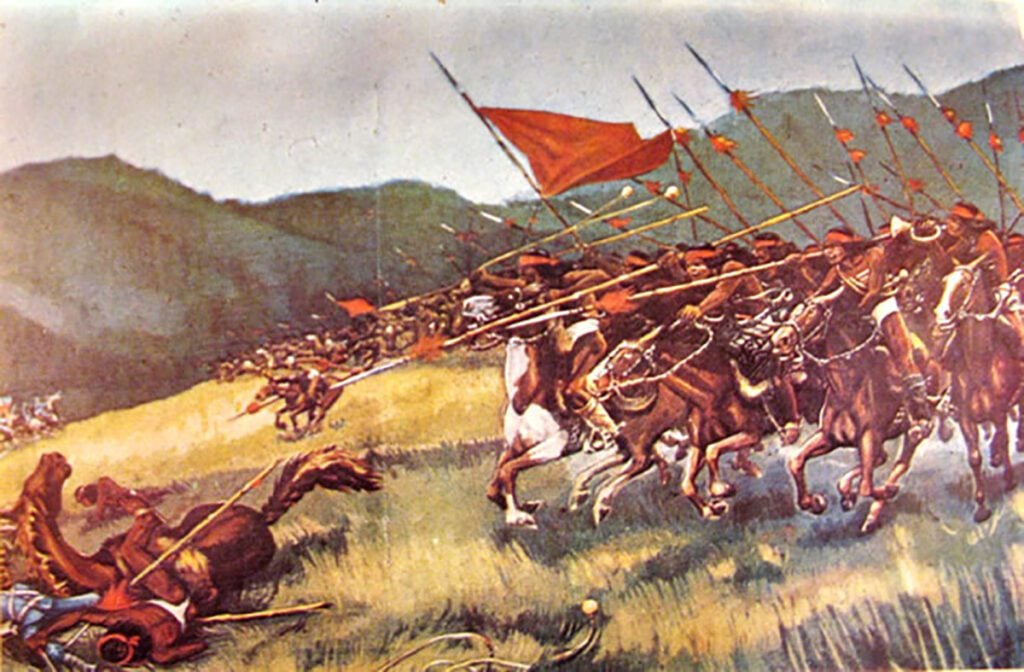Most conflicts between European colonizers and Native Americans began in the 15th century. The fighting was swift and brutal. But did you know that there was one tribe who fought against Spanish control and won?
The Mapuche of South America were one of the tribes that successfully resisted Spanish control, remaining independent for more than 300 years. They dubbed the Spaniards “New Incas” because they successfully fought the Incan Empire. They were only conquered in 1883.
Mapuche Tribe’s War with Spaniards
Pedro de Valdivia, who aimed to control all of Chile to the Straits of Magellan, traveled southward in 1550 to conquer Mapuche territory. Between 1550 and 1553, the Spanish established Concepción, Valdivia, Imperial, Villarrica, and Angol in Mapuche territory. The Spanish also built forts at Arauco, Purén, and Tucapel.
The valleys around the Cordillera de Nahuelbuta were the critical areas of conflict that the Spanish attempted to secure south of the Bo Bo River. The Spanish intended to exploit the gold placer deposits in this region with unpaid Mapuche labor from the densely populated valleys. (Source: Britannica)
The Arauco War
Following these initial conquests, the Arauco War erupted, resulting in a long period of intermittent warfare between Mapuches and Spaniards. The lack of a tradition of forced labor, such as the Andean mit’a, among the Mapuches, who largely refused to serve the Spanish, was a contributing factor. On the other hand, the Spanish, particularly those from Castile and Extremadura, came from an extremely violent society.
Since the arrival of the Spaniards in Araucana in 1550, the Mapuches have frequently laid siege to Spanish cities between 1550 and 1598. The conflict was mainly low-intensity.
At the Battle of Tucapel in 1553, the Mapuches, led by Caupolicán and Lautaro, killed Pedro de Valdivia. In 1554 and 1555, the Mapuches were prevented from taking further actions to expel the Spanish due to the outbreak of a typhus plague, a drought, and famine.
Between 1556 and 1557, a small party of Mapuches led by Lautaro attempted to reach Santiago to free Central Chile from Spanish rule. Lautaro’s attempts were cut short in 1557 when he was killed in an ambush by the Spanish.
The Spanish regrouped under the governorship of Garca Hurtado de Mendoza (1558–1561) and managed to assassinate two key Mapuche leaders, Caupolicán and Galvarino. Furthermore, during the reign of Garca Hurtado de Mendoza, the Spanish rebuilt Concepción and Angol, which had been destroyed by Mapuches. They established two new cities in Mapuche territory: Osorno and Caete. In 1567, Spaniards conquered the Huilliche-inhabited Chiloé Archipelago.
Pedro de Villagra massacred and subdued revolting Mapuches around La Imperial in the 1570s. In the 1590s, warfare in Araucana became more intense.
Purén Mapuches, and to a lesser extent Tucapel Mapuches, gained a reputation for ferocity among Mapuches and Spaniards alike over time. This enabled the Purén Mapuches to rally other Mapuches in their fight against the Spaniards. (Source: Britannica )
Wartime Adaptations
Mapuches had little success in early battles with the Spaniards. Still, over time, the Mapuches of Arauco and Tucapel adapted by using horses and amassing the large numbers of troops required to defeat the Spanish. (Source: Britannica)
